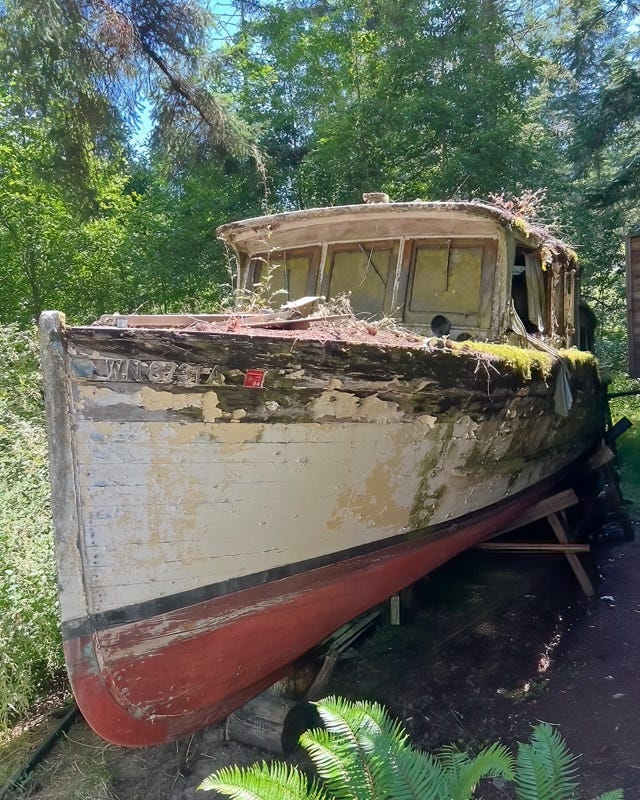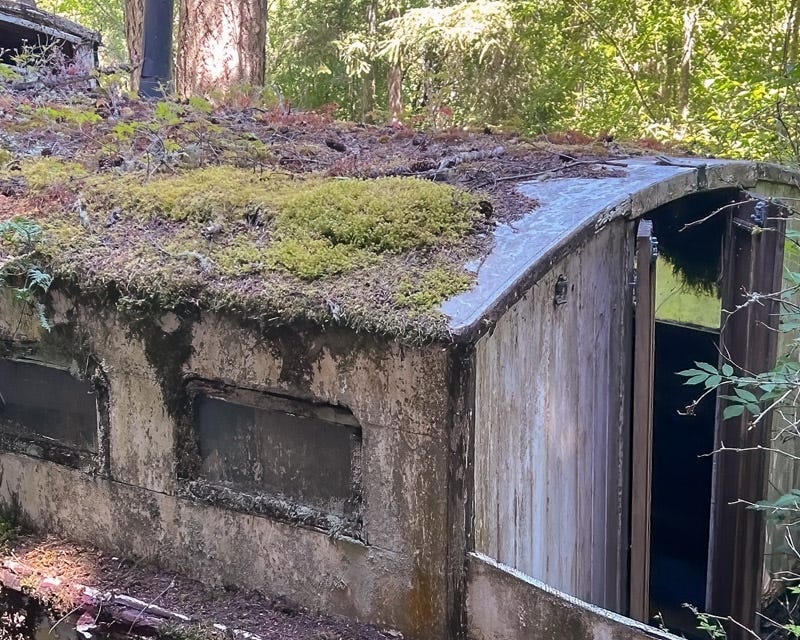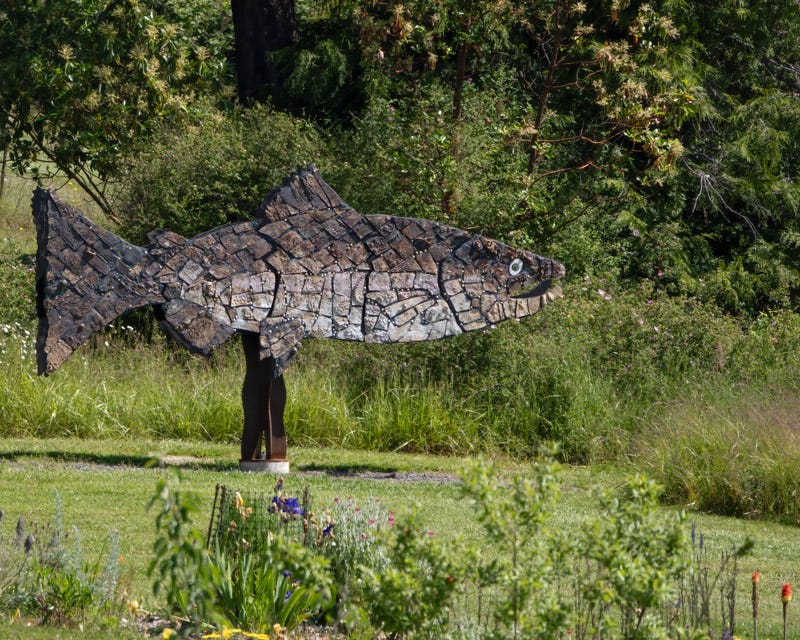Samples of Outdoor Art and Artsy "Things" on San Juan Island
I thought these blended well with the natural beauty of the island
Salmon played a crucial role in the history of the San Juan Islands. Salmon were vital to the culture and economy of the Coast Salish people. Abundant Salmon runs provided a major food source and sustained a later Salmon industry. This large wooden Salmon sculpture was on the side of a building at the Alchemy Art Center near Friday Harbor.
There was a Studio Art Tour on the weekend we were on the island. At one site, years ago the resident artists had brought an old inactive boat to the side of the barn. By now, the forest had begun to take back the boat as you can see by the moss beginning to grow on the wooden deck.
Here's a look at the cabin of the boat. To me, this speaks strongly of the history and importance of fishing on San Juan but also the inevitably of nature to prevail in the long term.
In Friday Harbor just two blocks from the ferry terminal, there was an old wooden carport. It too showed the impact of nature as leaves and moss accumulated on its roof.
On Roche Harbor on the northern end of San Juan there is the San Juan Sculpture Garden, a 20 acre park with gardens, walking paths, a pond, and over 150 outdoor sculptures. I thought that this one was special. Three pieces of red cedar were carved to represent the dorsal fins of the resident Orcas in the area. Here is the story behind the whale sculpture:
At the Sculpture Garden, there was another Salmon that looked like a twin of the one on the side of the Alchemy Art Center studio.
The waters around the Salish Sea (which includes Puget Sound) have been known for milenia for the resident Orca whales that live there. The Coast Salish people had considered these large mammals to be guardians of the sea and protectors of all who traveled on it. The Orcas have deep cultural and spiritual significance to the Salish people. In the early 1900's, the whales had been considered a threat to the fishing industry and been hunted down. Then, in the mid-20th century, the numbers of those Killer Whales were decimated as whales were captured for the aquarium industry. This sculpture on Jackson Beach and the history behind it tell a powerful story.
The totem pole represents Tokitae, who in 2023 was the last remaining area Orca still held by an aquarium. To read about her and the story behind the totem pole, see the Seattle Times coverage. It is a powerful story.









All of the art and installations are beautiful and really highlight the deep connection the people,of the island have with the environment. The totem pole and the story are very moving. Thanks for sharing
I’m imagining the world back then when the Orcas had a deep cultural and spiritual significance to the Salish people.